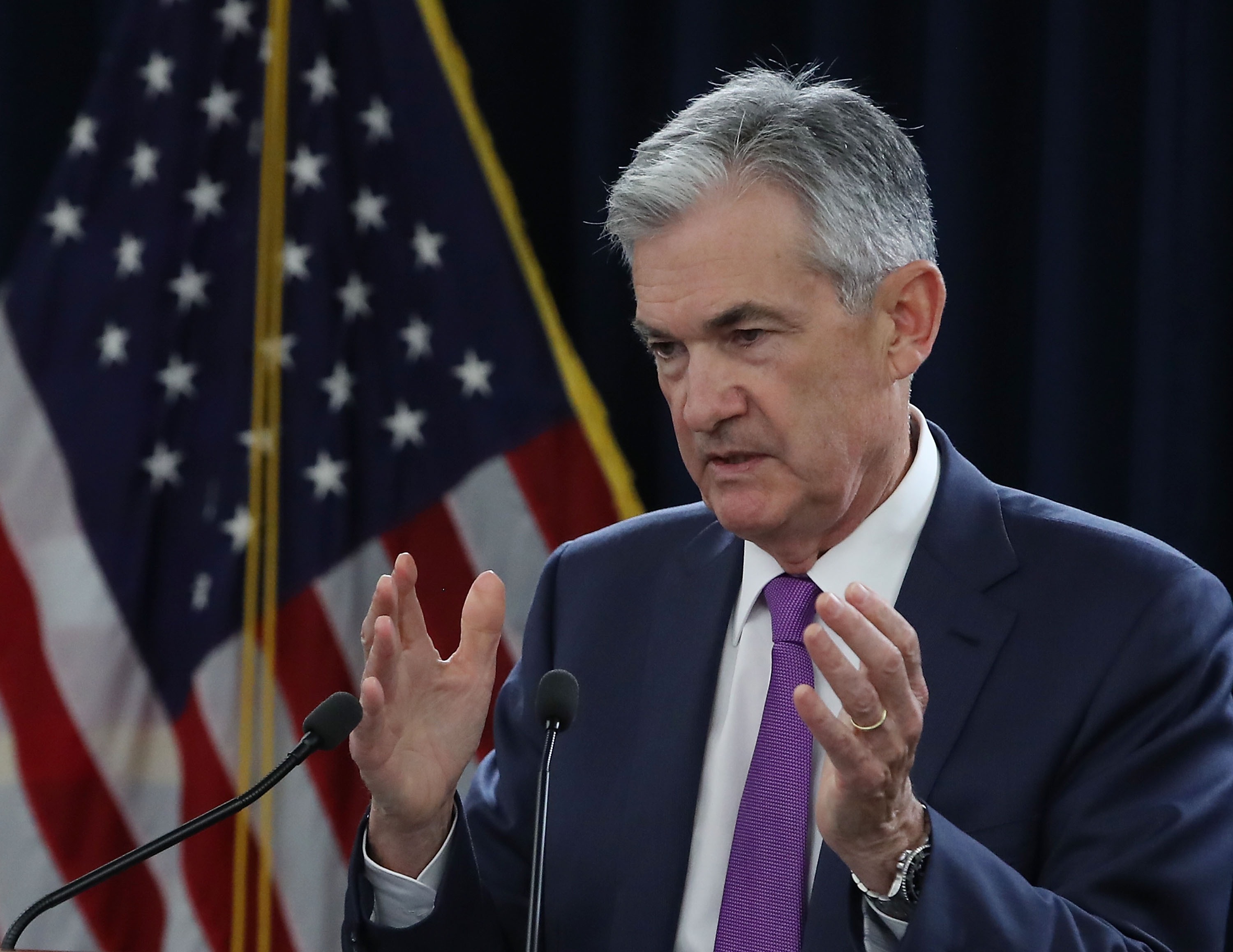US wages gains will get Fed’s attention; no rate hike yet
Federal Reserve Board Chairman Jerome Powell will try to tap on the economy’s brakes so that growth continues without inflation (MARK WILSON)
Washington (AFP) – Wage gains at long last have made an appearance in the US economy after a baffling absence amid robust job growth but the Federal Reserve is expected to hold its fire next week.
Central bankers certainly will take notice of the recent data, with especial focus on everything contributing to inflation, but have made it clear they are committed to a gradual pace of increases in the benchmark lending rate, meaning the fourth hike of the year will not come until December.
The Fed’s rate-setting Federal Open Market (FOMC) meets Wednesday and Thursday but, in keeping with recent custom, economists do not expect any moves to be made since this meeting is not one that will be followed by a press conference with Fed Chairman Jerome Powell.
That dynamic will change next year when Powell will hold a briefing after every policy meeting, making economists’ forecasts a bit more lively.
Fed officials have made it clear the economy can continue to perform well for some time with the current course of rate increases.
Three more are expected next year as the central bank removes stimulus from the economy to prevent price pressures from accelerating.
The meeting takes place against the backdrop of President Donald Trump’s repeated attacks on Powell for raising rates, which has injected an unwelcome political element into the deliberations.
Trump said the Fed has gone “crazy” and posed the greatest threat to his economic policies by moving too fast.
“He was supposed to be a low-interest-rate guy. It’s turned out that he’s not,” Trump said.
But the Fed has made it clear more rate hikes will be needed, since as companies increasingly are having difficulty finding and keeping workers, which likely means wages will rise faster.
And firms also are facing price increases due to Trump’s aggressive trade policies that have imposed steep tariffs on steel, aluminum and thousands of needed inputs.
– Don’t kill the recovery –
Diane Swonk of Grant Thornton said the central bank was trying to fine tune the economy so that it can continue to grow without igniting inflation.
“The Fed is not trying to kill the economy,” she said in a research note.
Instead, the FOMC members “are trying to pace us so that we can extend the length of this marathon we are now running.”
The recovery from the 2008 global financial crisis is now in its 10th year, making it the second-longest of the post-World War II era. “The FOMC would like it to exceed the 1990s in length,” Swonk said.
Able to declare victory with half of its dual mandate achieved — full employment, as seen by the 48-year low in the jobless rate of 3.7 percent — central bankers are watching closely for any buildup of inflation.
The Fed’s preferred measure of inflation is right on target at two percent a year but policymakers will scrutinize the continued job creation, the 3.1 percent gain in average hourly wages and a 2.8 percent quarterly gain in total compensation.
Mickey Levy of Berenberg Capital Markets, said, “The moderate improvement in wage growth keeps the Fed on track to hike again in December and enables them to transition to a slower pace of rate increases next year.”
Economist Joel Naroff notes that the pace of job creation “seems to be unsustainable.”
But he cautioned that the 3.1 percent wage gain “will be the data point that catches the attention of the Fed members the most. And they will not be happy about it.”
Disclaimer: This story has not been edited by Siliconeer and is published from a syndicated feed. Siliconeer does not assume any liability for the above story. Validity of the above story is for 7 Days from original date of publishing. Content copyright AFP.


